Benevolent Dictator For Life (BDFL)
description: a title given to a person with life-long authority over a software project
14 results

Forge Your Future with Open Source
by
VM (Vicky) Brasseur
The relatively small size and scope allow an atomic commit to be reviewed more easily and thoroughly and is easier to roll back should something go wrong. Both the review and the easy rollback mitigate the risk of fatal bugs slipping into the project. BDFL Short for Benevolent Dictator For Life. BDFLs are rare in FOSS but they do exist. For example, Guido van Rossum was the BDFL of Python and Dries Buytaert is the BDFL of Drupal. A BDFL is typically the founder of the project. They have final say in and can veto all decisions related to the project, but it’s very rare that they use this power. Typically a BDFL will lean on the Benevolent part of the title by seeking consensus and always working toward what’s best for both the project and its community.
…
While the project founder often is a part of the leadership, it’s not uncommon that the founder has gone on to other things and left the project in the capable hands of other people. Sometimes a founder takes on the role Benevolent Dictator For Life, or as its more commonly known, BDFL. If the project has a BDFL, then when someone says, “The buck stops here,” the role of “here” is played by the BDFL. This person has final say in and can veto all decisions. Typically, though, all leaders of FOSS projects—BDFL or otherwise—work toward consensus rather than impose their authority (hence the benevolent part of the title). One step removed from the core of the community onion, you’ll find the core contributors.
…
You may be used to guiding the project in whatever direction makes the most sense for you and your purposes, but once you release it and have users, that guiding must shift to what makes the most sense for the community. While a few large project communities are able to get away with having a Benevolent Dictator for Life, even they don’t unilaterally impose their will upon the direction of the project features and instead consider the overall good to the project and the community. Releasing a project implies to the community that you’re open to collaborations of all sorts. They will expect to have input into the direction of the project and the ability to shape that direction through their contributions.
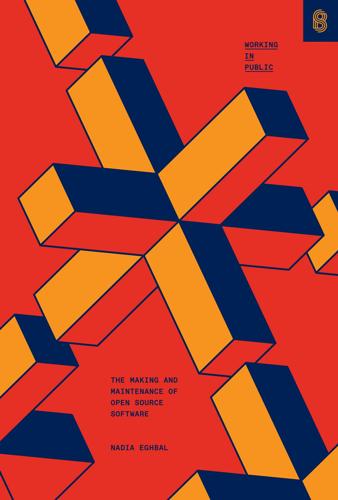
Working in Public: The Making and Maintenance of Open Source Software
by
Nadia Eghbal
Published 3 Aug 2020
21 It’s not just Torvalds’s communication skills but also his governance style that helped him gain notoriety. In one of his essays, Raymond called this style “benevolent dictator,”23 which was later adapted by Guido van Rossum, author of the Python programming language, into the better-known phrase “Benevolent Dictator for Life” (BDFL), to describe authors of open source projects who retain control even as the project grows. Although the Linux Foundation reports more than 14,000 contributors to the Linux kernel since 2005,24 Torvalds is still the only person who’s allowed to merge those contributions into the main project.25 Although there is no shortage of memorable hacker personalities, the free and early open source ethos is also defined by a startling lack of interest in its people.
…
For example, while Sebastian McKenzie, also known as kittens, authored Babel, he is no longer a maintainer of the project.145 Conversely, not all maintainers are necessarily authors, and who is considered a maintainer may change over the life of the project. Some of these transitions occur after the contributor community has reached a certain size. Jacob Kaplan-Moss and Adrian Holovaty, who authored Django, retired as BDFLs (“Benevolent Dictators for Life”) after nine years, with Jacob explaining that “the longer I observe the Django community, the more I realize that our community doesn’t need [us].”146 Maintainer transitions occur even in smaller projects. Urllib3, a Python HTTP library, has announced multiple “lead maintainer” transitions over its ten years of development.147 Its author, Andrey Petrov, explains that “handing over the reins of a project is a natural part of a successful project.”148 If they are not the original author, a maintainer may not have commit or administrative rights, which can lead to exactly the problems one might expect.
…
(Reading: Addison-Wesley, 1995), 32. 141 “Teams,” Django Software Foundation, accessed March 31, 2020, https://www.djangoproject.com/foundation/teams/. 142 Caddyserver / Caddy, GitHub, accessed March 31, 2020, https://github.com/caddyserver/caddy. 143 Spencer Heath MacCallum, The Art of Community (Menlo Park, CA: Institute for Humane Studies, 1970), 63–67. 144 MacCallum, The Art of Community, 63. 145 “Meet the Team,” Babel, accessed March 31, 2020, https://babeljs.io/team. 146 Jacob Kaplan-Moss, “Retiring as BDFLs,” Jacob Kaplan-Moss (blog), January 13, 2014, https://jacobian.org/2014/jan/13/retiring-as-bdfls/. 147 Urllib3, GitHub, accessed March 13, 2020, https://github.com/urllib3/urllib3/. 148 Andrey Petrov, “How to Hand over an Open Source Project to a New Maintainer,” Medium, February 9, 2018, https://medium.com/@shazow/how-to-hand-over-an-open-source-project-to-a-new-maintainer-db433aaf57e8. 149 Klint Finley, “Giving Open-Source Projects Life after a Developer’s Death,” Wired, November 6, 2017, https://www.wired.com/story/giving-open-source-projects-life-after-a-developers-death/. 150 Alanna Irving, “Funding Open Source: How Webpack Reached $400k+/Year,” Open Collective, October 23, 2017, https://medium.com/open-collective/funding-open-source-how-webpack-reached-400k-year-dfb6d8384e19. 151 Christopher Hiller, Nadia Eghbal, and Mikeal Rogers, “Maintaining a Popular Project and Managing Burnout with Christopher Hiller,” Request for Commits, podcast audio, November 1, 2017, https://changelog.com/rfc/15. 152 Ayrton Sparling (FallingSnow), “I Dont Know What to Say,” Event-stream Issues, GitHub, November 20, 2018, https://github.com/dominictarr/event-stream/issues/116. 153 Dominic Tarr (dominictarr), “Statement on Event-Stream Compromise,” Dominictarr / Readme.md Code, GitHub, November 26, 2018, https://gist.github.com/dominictarr/9fd9c1024c94592bc7268d36b8d83b3a. 154 Felix Geisendörfer, “The Pull Request Hack,” Felix Geisendörfer (blog), March 11, 2013, https://felixge.de/2013/03/11/the-pull-request-hack.html. 155 Na Sun, Patrick Pei-Luen Rau, and Liang Ma, “Understanding Lurkers in Online Communities: A Literature Review,” Computers in Human Behavior, no. 38 (September 2014): 110–117, https://www.sciencedirect.com/science/article/pii/S0747563214003008. 156 Kraut and Resnick, Building Successful Online Communities, 63. 157 Andrew J.
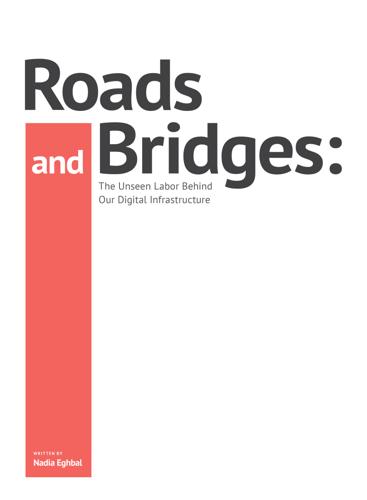
Roads and Bridges
by
Nadia Eghbal
Van Rossum claimed he was looking for a ‘hobby’ programming project that would keep me occupied during the week around Christmas.[59] The project took off, and Python is now considered to be one of the most popular programming languages today.[60] Van Rossum remains the principal author of Python (also known as a benevolent dictator for life, or BDFL, among developers) and is currently employed by Dropbox, whose software relies heavily on Python.[61] Python is partially managed by the Python Software Foundation, created in 2001, which has a number of corporate sponsors, including Intel, HP, and Google. RubyGems is a package manager that helps distribute programs and libraries associated with the Ruby programming language.
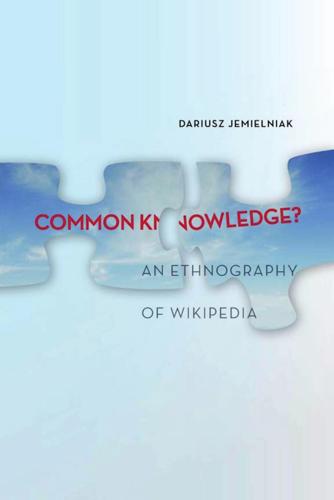
Common Knowledge?: An Ethnography of Wikipedia
by
Dariusz Jemielniak
Published 13 May 2014
One way to do this is turn the co-developers into a voting committee (as with Apache [Software Foundation]). Another is rotating dictatorship, in which control is occasionally passed from one member to another within a circle of senior co-developers; the Perl developers organize themselves this way. (1999/2004, pp. 101–102) Raymond possibly took the term from the “Benevolent Dictator for Life” nickname arguably given to Guido van Rossum, the creator of the Python programming language (Van Rossum, 2008). In Raymond’s concept, benevolent dictatorship is quite close to what Wales would refer to as a constitutional 1 6 2 L e a d e r s h i p T r a n s f o r m e d monarchy.
…
The Wikipedia cult [Interview by Daniel Tynan]. Global Politician. Retrieved from http://www.globalpolitician.com/26423-wikipedia-cult -jimmy-wales Van Maanen, J. (1988/2011). Tales of the field: On writing ethnography (2nd ed.). Chicago: University of Chicago Press. Van Rossum, G. (2008, July 31). Origin of BDFL. All Things Pythonic blog. Retrieved from http://www.artima.com/weblogs/viewpost.jsp?thread=235725 Verberg, N., Wood, E., Desmarais, S., & Senn, C. (2000). Gender differences in survey respondents’ written definitions of date rape. Canadian Journal of Human Sexuality, 9(3), 181–190. Viégas, F. B., Wattenberg, M., Kriss, J., & van Ham, F. (2007).
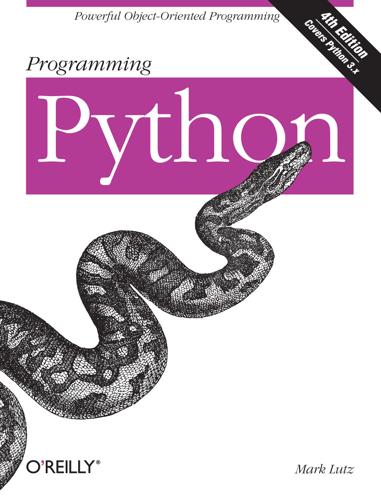
Programming Python
by
Mark Lutz
Published 5 Jan 2011
The PSF was preceded by the PSA, a group that was originally formed in response to an early thread on the Python newsgroup that posed the semiserious question: “What would happen if Guido was hit by a bus?” These days, Python creator Guido van Rossum is still the ultimate arbiter of proposed Python changes. He was officially anointed the BDFL—Benevolent Dictator for Life—of Python at the first Python conference and still makes final yes and no decisions on language changes (and apart from 3.0’s deliberate incompatibilities, has usually said no: a good thing in the programming languages domain, because Python tends to change slowly and in backward-compatible ways).
…
In fact, Python development is now a completely open process—anyone can inspect the latest source code files or submit patches by visiting a website (see http://www.python.org for details). As an open source package, Python development is really in the hands of a very large cast of developers working in concert around the world—so much so that if the BDFL ever does pass the torch, Python will almost certainly continue to enjoy the kind of support its users have come to expect. Though not without pitfalls of their own, open source projects by nature tend to reflect the needs of their user communities more than either individuals or shareholders. Given Python’s popularity, bus attacks seem less threatening now than they once did.
…
Note how the < and > characters are translated to HTML escapes with cgi.escape before being inserted into the reply: <tr><th>key<td><input type=text name=key value="guido"> <tr><th>name<td><input type=text name=name value="'GvR'"> <tr><th>age<td><input type=text name=age value="None"> <tr><th>job<td><input type=text name=job value="'BDFL'"> <tr><th>pay<td><input type=text name=pay value="'<shrubbery>'"> As usual, the standard library urllib module package comes in handy for testing our CGI script; the output we get back is raw HTML, but we can parse it with other standard library tools and use it as the basis of a server-side script regression testing system run on any Internet-capable machine.
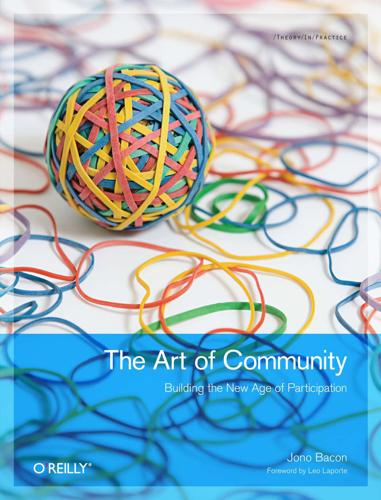
The Art of Community: Building the New Age of Participation
by
Jono Bacon
Published 1 Aug 2009
The Drupal community uses a do-ocracy model, meaning people work on what they want to work on, instead of being told what to work on. Decisions are usually made through consensus building and based on technical merit, trust, and respect. As the project lead, and with the help of my comaintainers, I help guide the community in strategic directions. As a BDFL (benevolent dictator for life) I can veto certain decisions, or more importantly, I can make decisions when the community gets stuck. This happens, for example, when there are two competing implementations for a particular feature and the community can’t agree on which proposed architecture is better. How have you balanced the community relationship and investment from Acquia?
…
If you really want to go a different way, then we encourage you to make a derivative distribution or alternative set of packages available using the Ubuntu Package Management framework, so that the community can try out your changes and ideas for itself and contribute to the discussion. When you are unsure, ask for help Nobody knows everything, and nobody is expected to be perfect in the Ubuntu community (except of course the SABDFL [Self-Appointed Benevolent Dictator for Life]). Asking questions avoids many problems down the road, and so questions are encouraged. Those who are asked should be responsive and helpful. However, when asking a question, care must be taken to do so in an appropriate forum. Off-topic questions, such as requests for help on a development mailing list, detract from productive discussion.
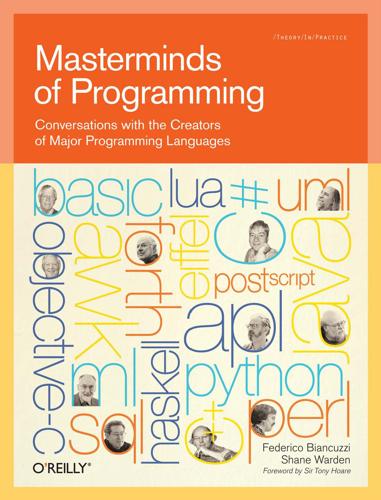
Masterminds of Programming: Conversations With the Creators of Major Programming Languages
by
Federico Biancuzzi
and
Shane Warden
Published 21 Mar 2009
He is a member of the U.S. National Academy of Engineering, an ACM fellow, and an IEEE fellow. He has received numerous professional awards. Guido van Rossum is the creator of Python, one of the major programming languages on and off the Web. The Python community refers to him as the BDFL (Benevolent Dictator For Life), a title that could have been taken from a Monty Python skit (but wasn’t). Guido grew up in the Netherlands and worked for a long time at CWI in Amsterdam, where Python was born. He moved to the U.S. in 1995, where he lived in northern Virginia, got married, and had a son. In 2003, the family moved to California, where Guido now works for Google, spending 50% of his time on the Python open source project and the rest of his time using Python for internal Google projects.

The Stack: On Software and Sovereignty
by
Benjamin H. Bratton
Published 19 Feb 2016
That is, insurance as killer app of Internet of Things gets interesting if those “things” are not just smart refrigerators but every little bit of every supply chain that must account for itself as a carbon-intensive Earth object. 12. Another software trend championed by O’Reilly is Open Stack, a set of tools that allows for, as it sounds, an open source Stack architecture (in a delimited sense). It also claims to work without the governance of a Benevolent Dictator for Life (BDFL). Many Users may be surprised to learn that many of the open source software tools they use every day, perhaps without knowing it, such as Linux, Python, Perl, Drupal, and PHP, are not communitarian anarchies but rather—at least in the last instance—formal monarchies. I raise the point not so as to recommend that platform states function as Cloud-based monarchies, but to underscore that the reality of order-giving force and decision making is not a design problem that can avoided by leaving it to the ever-widening dining tables of horizontal relational “consensus.” 13.
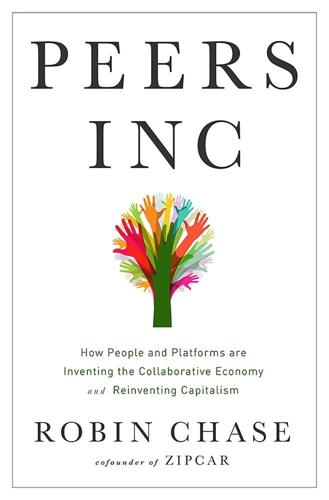
Peers Inc: How People and Platforms Are Inventing the Collaborative Economy and Reinventing Capitalism
by
Robin Chase
Published 14 May 2015
“Core Infrastructure Initiative,” Wikipedia, http://en.wikipedia.org/wiki/Core_Infrastructure_Initiative. 19. Michael Carney, “GitHub CEO Explains Why the Company Took So Damn Long to Raise Venture Capital,” pando.com, June 20, 2013, http://pando.com/2013/06/20/github-ceo-explains-why-the-company-took-so-damn-long-to-raise-venture-capital. 20. “Benevolent Dictator for Life,” Wikipedia, https://en.wikipedia.org/wiki/Benevolent_dictator_for_life. 21. “Crypto-Currency Market Capitalizations,” http://coinmarketcap.com. 22. “Who Controls the Bitcoin Network?,” Bitcoin website, https://bitcoin.org/en/faq#who-controls-the-bitcoin-network. 23. Bitsmith, “Inside a Chinese Bitcoin Mine,” The Coinsman, August 11, 2014, www.thecoinsman.com/2014/08/bitcoin/inside-chinese-bitcoin-mine. 24.

Dreaming in Code: Two Dozen Programmers, Three Years, 4,732 Bugs, and One Quest for Transcendent Software
by
Scott Rosenberg
Published 2 Jan 2006
Finally, critics argued, open source methods still hadn’t proved their value in developing products that were usable for people who didn’t live and breathe computer technology. That complaint, because it was largely true, stung the most. And Kapor hoped his new project would answer it. Torvalds, who is known as Benevolent Dictator for Life of the Linux operating system, consistently exudes a calm optimism about the long-term prospects for the movement he symbolizes. “In science,” as he explained in a 2004 interview in Business Week, “the whole system builds on people looking at other people’s results and building on top of them.
…
When Kapor began taking the latest builds of Chandler out to demo for friends in the industry—as he finally did, once Chandler 0.5 was finished—it was these extensions, with their almost effortless stitching together of seemingly disparate types of information and services, that wowed. Something very unusual had happened to the Chandler team over time. Not by design but maybe not entirely coincidentally, it had become an open source project largely managed by women. Kapor was still the “benevolent dictator for life,” the title he had half-jokingly accepted on the Chandler mailing list in a tip of the hat to Linus Torvalds’s use of the phrase. But with Katie Parlante and Lisa Dusseault running the engineering groups, Sheila Mooney in charge of product management, and Mimi Yin as the lead designer, Chandler had what was, in the world of software development, an impressive depth of female leadership.
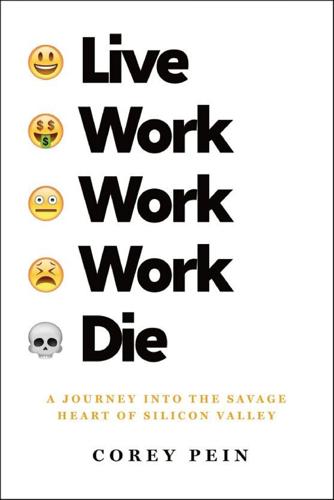
Live Work Work Work Die: A Journey Into the Savage Heart of Silicon Valley
by
Corey Pein
Published 23 Apr 2018
The name Tlon referenced a short story by Jorge Luis Borges in which “a secret society of astronomers, biologists, engineers, metaphysicians, poets, chemists, algebraists, moralists, painters, geometers … directed by an obscure man of genius” built a “brave new world” that forced old cultures and countries into extinction. Yarvin’s title at Tlon was, appropriately enough, “benevolent dictator for life.” His cofounder was a young man named John Burnham who, at age eighteen, accepted $100,000 from Thiel to skip college and go directly into business. Instead of mining asteroids as he originally intended, Burnham wound up working with Yarvin. Tlon had no product when Thiel invested, at least not in the conventional sense.
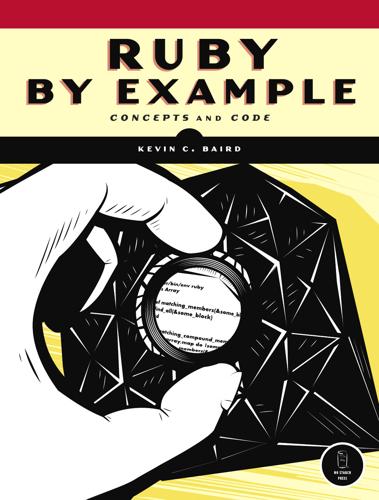
Ruby by example: concepts and code
by
Kevin C. Baird
Published 1 Jun 2007
PHP’s web integration is such an important part of its most frequent use (if not its design) that it is often best compared to other programming languages when combined with their own web integration systems, such Perl and Mason, or Ruby and eRuby or Rails. PHP’s creator Rasmus Lerdorf began work on the project that would eventually become PHP in 1995. You can find out more about it at http://php.net. Python Python is a language very similar to Ruby. Its creator, the “Benevolent Dictator For Life” Guido van Rossum, named it after the British comedy troupe Monty Python when he invented it in the early 1990s. It has strong, dynamic typing very similar to Ruby’s and a similarly clean syntax, which is aided by its use of semantically significant whitespace. In Python, neither functions, blocks of code, nor statements need to have an explicit end-of-line mark (often a semicolon).
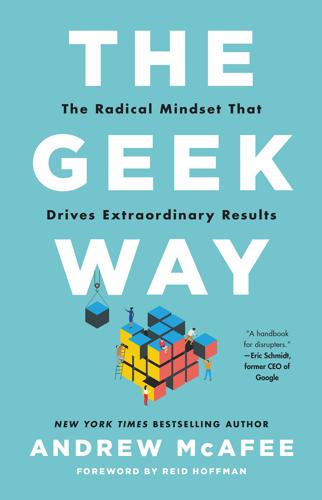
The Geek Way: The Radical Mindset That Drives Extraordinary Results
by
Andrew McAfee
Published 14 Nov 2023
Linux became the largest open-source software project in the world, with more than eighty thousand improvements and bug fixes made in 2017 by a global community of programmers. Torvalds remained a towering figure in this community. He was directly responsible for maintaining and developing the kernel, but his true role was conveyed by his informal job title: “benevolent dictator for life.” In many online interactions, however, he appeared downright malevolent. He swore frequently and leveled personal attacks, saying things like, “Just kill yourself now. The world will be a better place.” When others criticized him for such language, a typical response was, “Jokes are often offensive.

Django Book
by
Matt Behrens
Published 24 Jan 2015
They released it in July 2005 and named it Django, after the jazz guitarist Django Reinhardt. Now, several years later, Django is a well-established open source project with tens of thousands of users and contributors spread across the planet. Two of the original World Online developers (the “Benevolent Dictators for Life,” Adrian and Jacob) still provide central guidance for the framework’s growth, but it’s much more of a collaborative team effort. This history is relevant because it helps explain two key things. The first is Django’s “sweet spot.” Because Django was born in a news environment, it offers several features (such as its admin site, covered in Chapter 6) that are particularly well suited for “content” sites – sites like Amazon.com, craigslist.org, and washingtonpost.com that offer dynamic, database-driven information.